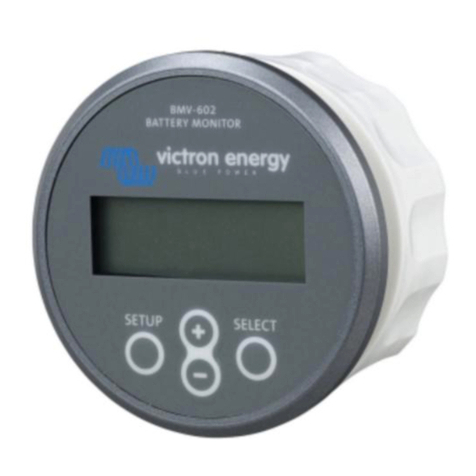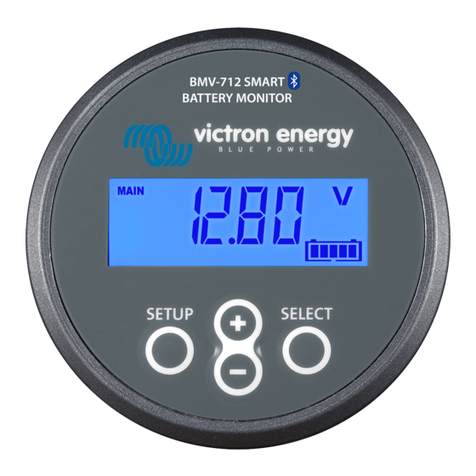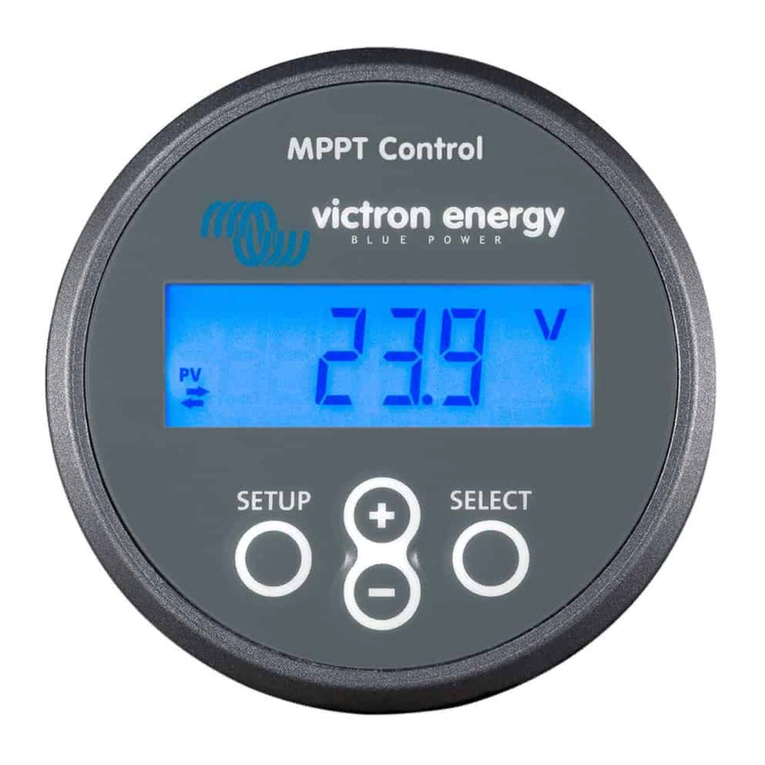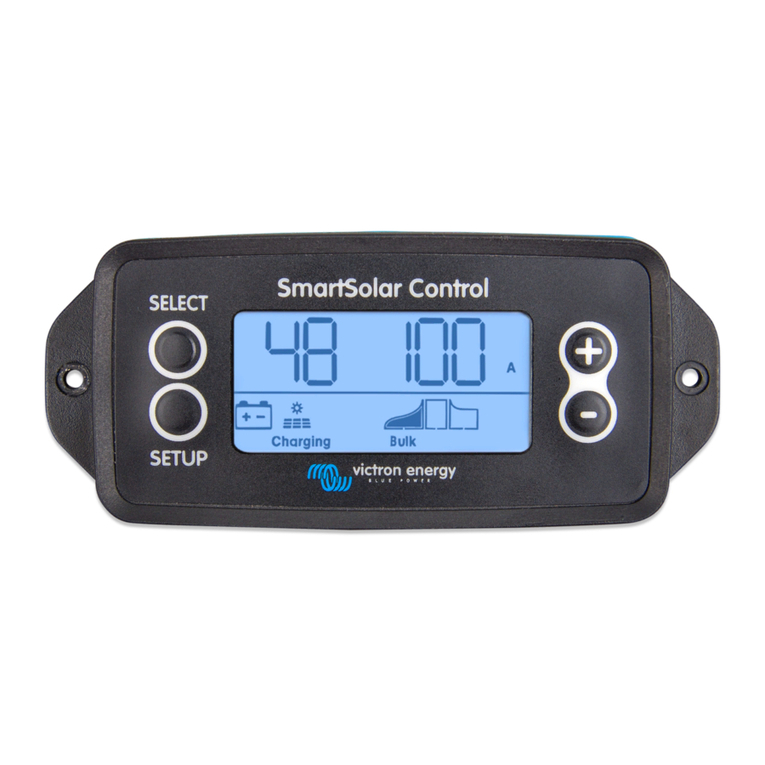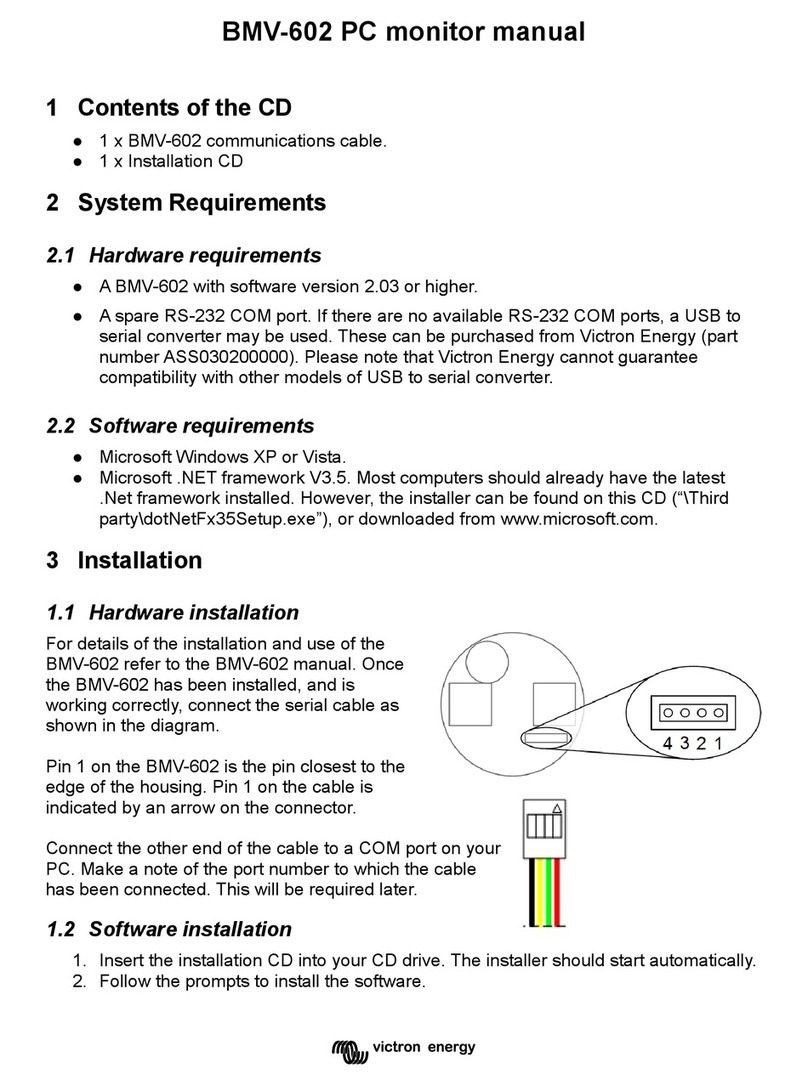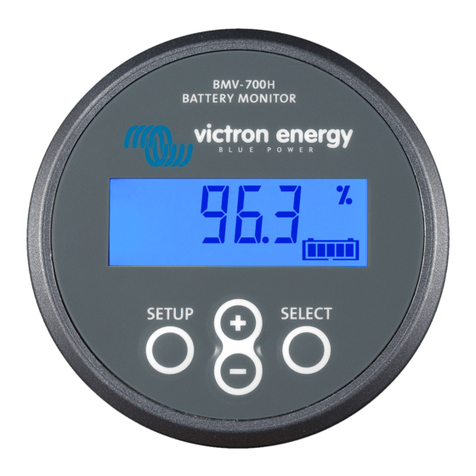8
Battery bank bottom section voltage
BMV-702 only, when the auxiliary input is set
to MID.
Compare with the top section voltage to check battery balancing.
Battery bank mid-point deviation
BMV-702 only,when the auxiliary input is set
to MID.
Deviation in percent of the measured mid-point voltage.
Battery bank mid-point deviation voltage
BMV-702 only, when the auxiliary input is set
to MID.
Deviation in Volts of the mid-point voltage.
2.2 Synchronizing the BMV
For a reliable readout, the state of charge as displayed by the battery
monitor has to be synchronized regularly with the true state of charge of
the battery. This is accomplished by fully charging the battery.
In case of a 12V battery, the BMV resets to ‘fully charged’ when the
following ‘charged parameters’ are met: the voltage exceeds 13.2V and
simultaneously the (tail-) charge current is less than 4.0% of the total
battery capacity (e.g. 8A for a 200Ah battery) during 4 minutes.
The BMV can also be synchronized (i.e. set to ‘battery fully charged’)
manually if required. This can be achieved in normal operating mode by
holding the + and – buttons simultaneously for 3 seconds, or in setup
mode by using the SYNC option (see section 4.2.1, setting number 10).
If the BMV does not synchronize automatically, the charged voltage, tail
current, and/or charged time may need adjustment.
When the voltage supply to the BMV has been interrupted, the battery
monitor must be resynchronized before it can operate correctly.
